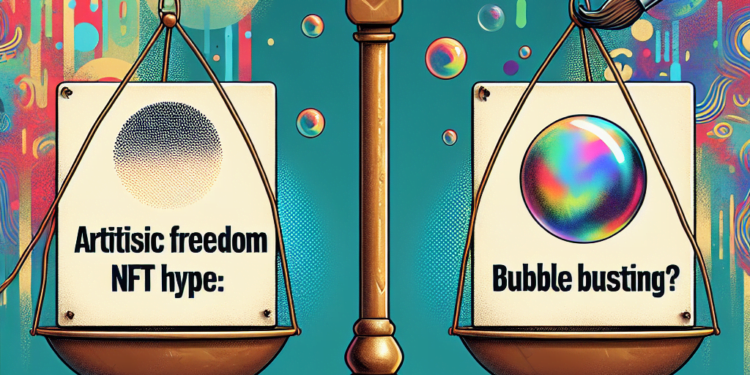By now, you have surely heard about the phenomenon known as Non-Fungible Tokens (NFTs). They are currently making waves in the art world and beyond, with everything from GIFs to tweets being sold for mind-boggling sums. But is this liberating freedom for artists and content creators or is it just another bubble about to burst? Let’s decode the hype.
What are NFTs?
First, let’s understand what an NFT is. Non-Fungible Tokens (NFTs) are a type of digital asset created using blockchain technology. Unlike cryptocurrencies such as Bitcoin or Ethereum, which are fungible and can be exchanged on a like-for-like basis, NFTs are unique, and each token can contain specific information or attributes that make them unexchangeable with one another. This uniqueness and the ability to prove ownership of a digital asset is what gives the NFTs their value.
Artistic Freedom
NFTs have really struck a chord in the art world. For the first time, artists can sell their digital artworks directly to collectors without the need for galleries or auction houses. They can also program royalties into their NFTs, so they receive a percentage of profits if their art is resold at a higher price.
This has opened up entirely new revenue streams for digital artists and breathed new life into the digital art space. For example, digital artist Mike Winkelmann, also known as Beeple, had an NFT of his work sell at a Christie’s auction for a whopping $69 million. Could there be a clearer indication of how the art world has embraced NFTs?
The Bubble Factor
However, akin to every disruptive technology, NFTs have their fair share of skeptics. Many have compared the booming market to the infamous Dot-com bubble of the late 1990s or the more recent Bitcoin craze. Critics argue that the fevered buying of NTFs, from artwork to sports highlights to tweets, is not sustainable. They point to the volatility of the crypto market, the environmental impact of creating NFTs, and the potential for fraud as just a few of the downsides of this hype.
Furthermore, some fear that the NFT craze may become a speculative bubble, in which the value of these tokens becomes inflated beyond their inherent worth. The sudden drop in NFT sales during the end of March has only added fuel to this argument, with critics pointing out that this could be the beginning of an imminent burst.
So, Freedom or Bubble Bursting?
The truth probably lies somewhere in the middle. While there are valid concerns about the sustainability of the NFT hype, it’s also clear that this technology has provided a much-needed boost to digital artists and content creators. It’s a space with enormous potential, but like all new frontiers, it comes with its share of risks.
For artists, the advice would be to explore this new medium but do so with caution — don’t bank on it as your sole source of income just yet. For buyers, caveat emptor — Buyer Beware — applies. Make sure you understand the risks involved in buying NFTs and only purchase what you can afford to lose.
The rise of NFTs is a fascinating phenomenon to observe. Whether it’s a bubble about to burst or the dawn of a new era in digital art, we’ll just have to wait and watch. For more on the intriguing world of NFTs and other trending news, visit DeFi Daily News.
Conclusion
Ultimately the NFT space stands as one of the most exciting, controversial, and intriguing developments in recent times. The democratization of the art world it brings alongside the questions about its sustainability initiates a lively debate. For now, as we watch this space evolve, it’s essential to take everything in stride and navigate with caution and a thorough understanding of the area – whether you’re an artist or an investor.
Frequently Asked Questions
1. What are Non-Fungible Tokens (NFTs)?
NFTs are types of digital assets created using blockchain technology. They are unique, which means each token holds specific information or features that cannot be exchanged with another.
2. How do NFTs benefit artists?
Artists can sell their digital artworks directly to collectors through NFTs, bypassing the need for galleries or auction houses. They can also implement royalties to receive a percentage of future resales.
3. What are the downsides of NFTs?
Critics highlight the volatile crypto market, the environmental impact of creating NFTs, and potential fraud as some of the downsides.
4. Why do some people believe the NFT market is a bubble waiting to burst?
The rapid and feverish buying and high valuations couple with a lack of understanding and baseless hype drive the belief that the NFT market might be a bubble similar to the dot-com bubble of the late 1990s.


















:max_bytes(150000):strip_icc()/Health-GettyImages-2200528988-de46655fe2ef4651a2560f09030ba6fc.jpg?w=120&resize=120,86&ssl=1)
